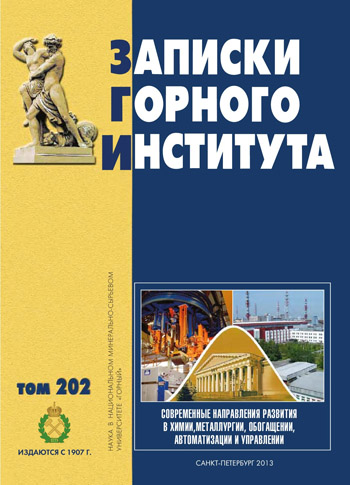Basic and strength of iron ore sinter
- 1 — post-graduate student National Mineral Resources University (Mining University)
- 2 — post-graduate student National Mineral Resources University (Mining University)
- 3 — Ph.D. associate professor National Mineral Resources University (Mining University)
- 4 — Ph.D., Dr.Sci. professor National Mineral Resources University (Mining University)
Abstract
Extreme dependence of the strength of sinter from its basicity is explained by content in the agglomerate iron and calcium silicates, which form a bundle of strength sinter. Minimum strength of sinter corresponds basicity about 1,2-1,4. This proves the attempts to optimize the technology of this agglomerate with the planning of the experiment. Laboratory experiments have shown that the basicity of sinter with 1,4 at the optimal linear velocity of its sintering about 18,7 mm/min, obtained an acceptable yield ratio not more than 65 %, even at elevated (above 6 %) fuel rate. In order to increase the maximum strength of the agglomerate in this extreme dependence appropriate to increase the content of iron oxide. Found that with the increase in iron content of 1,5 % yield of the agglomerate increases by 1 %. It is noted that the increase in iron content in the agglomerate after the maximum strength can lead to some of its decline, due to increased melting of the charge and decreases the amount of a strength ferritic-calcium binding.
References
- Vegman E.F., Pyrikov A.N., Jacques A.R. The intensification of sintering process. Moscow, 1995. 105 p.
- Ballon I.D., Vegman E.F., Volovik G.A. et al. Blast Furnaces: Handbook in two volumes. Preparation of ore and metallurgical process. Moscow, 1980. Vol.1. 496 p.
- Vegman E.F., Zherebin B.N., Pohvisnev A.N. et al. Ironmaking. Moscow, 2004. P.169-170.
- Sulimenko L.M. General technology of silicates. Moscow, 2004. 335 p.
- Utkov V.A. High basic agglomerate. Moscow, 1977. 156 p.
